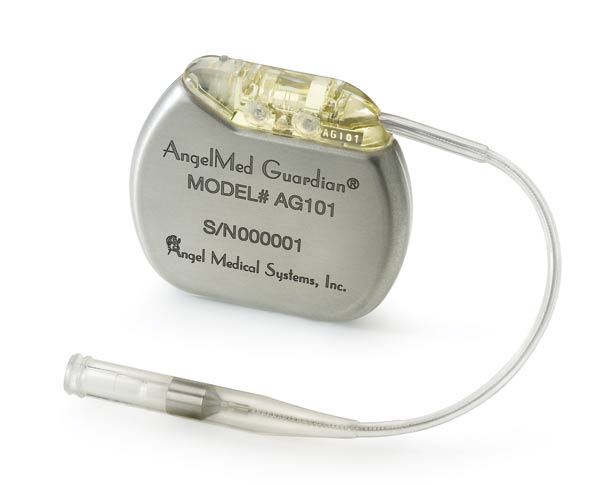Detecting Heart Attacks

AngelMed’s implantable device (left) alerts high-risk patients when they show signs of a heart attack and could help them get medical attention sooner. Whereas existing implantable devices are designed to detect electrical irregularities in the heart, known as arrhythmias, this device uses novel algorithms to detect problems with blood flow. The device picks up a subtle abnormality in electrical current that occurs when one of the coronary arteries is blocked by a clot. When the device detects these signs of heart attack, it generates a buzz that the patient can feel, alerting him or her to call 911. Approved in Brazil, the device is undergoing clinical testing in the United States.
Product: AngelMed Guardian System
Cost: Not available
Source: www.angel-med.com
Companies: AngelMed
Keep Reading
Most Popular
Large language models can do jaw-dropping things. But nobody knows exactly why.
And that's a problem. Figuring it out is one of the biggest scientific puzzles of our time and a crucial step towards controlling more powerful future models.
The problem with plug-in hybrids? Their drivers.
Plug-in hybrids are often sold as a transition to EVs, but new data from Europe shows we’re still underestimating the emissions they produce.
Google DeepMind’s new generative model makes Super Mario–like games from scratch
Genie learns how to control games by watching hours and hours of video. It could help train next-gen robots too.
How scientists traced a mysterious covid case back to six toilets
When wastewater surveillance turns into a hunt for a single infected individual, the ethics get tricky.
Stay connected
Get the latest updates from
MIT Technology Review
Discover special offers, top stories, upcoming events, and more.